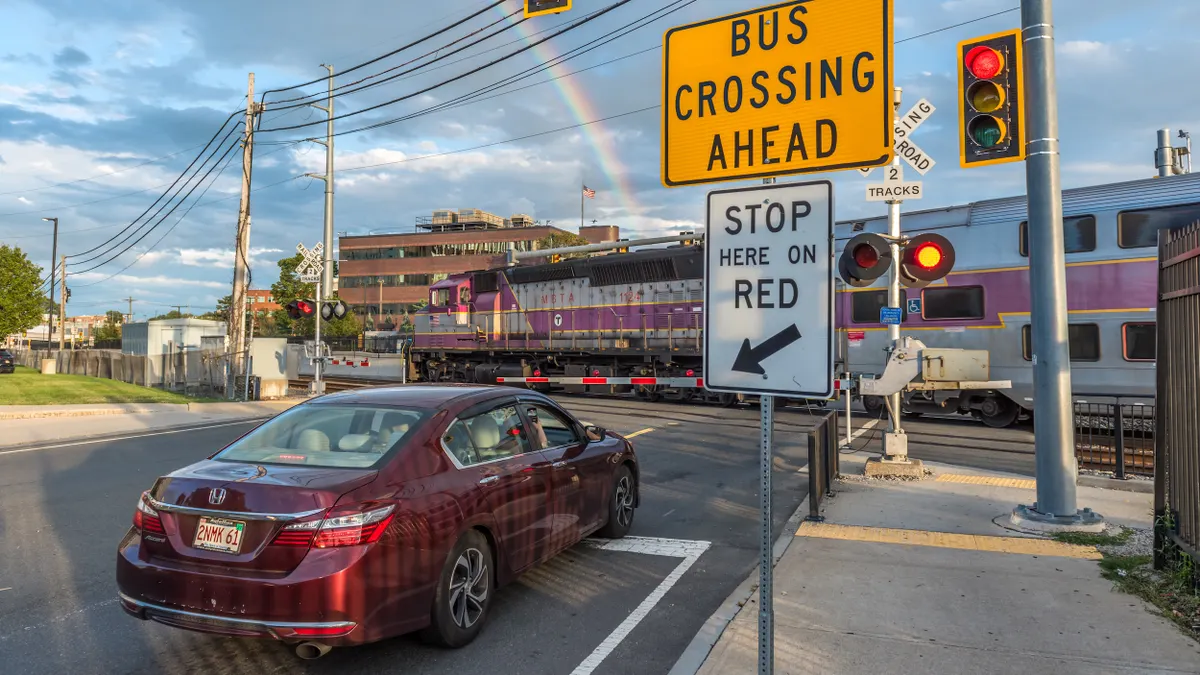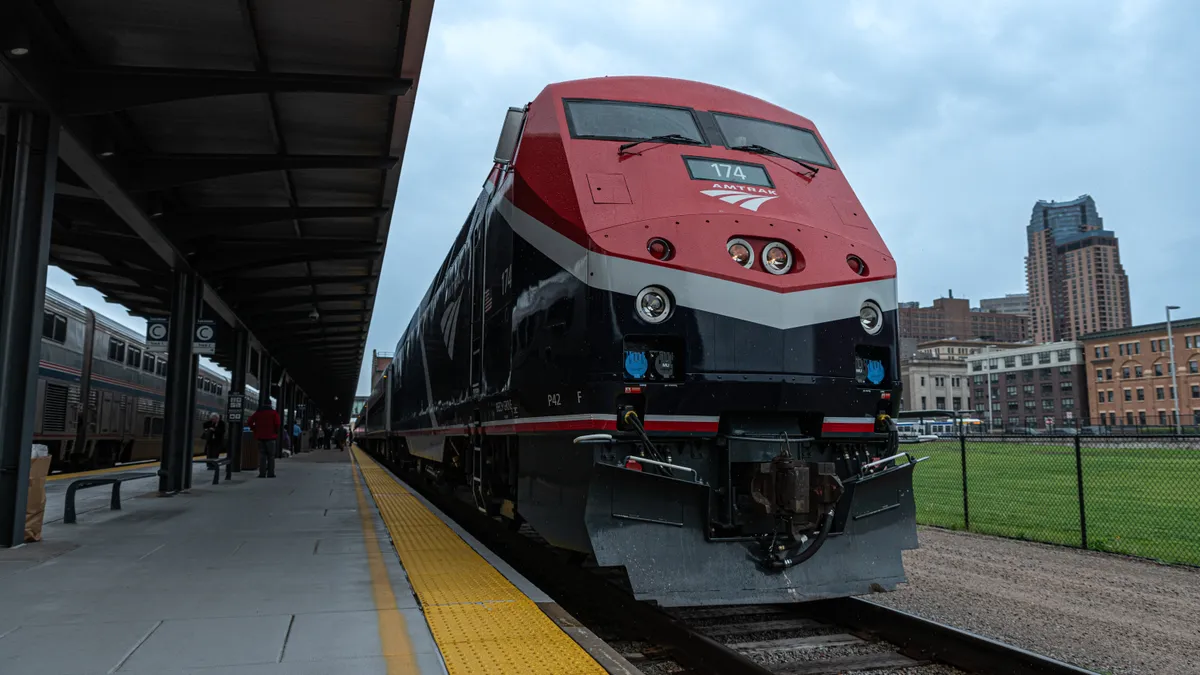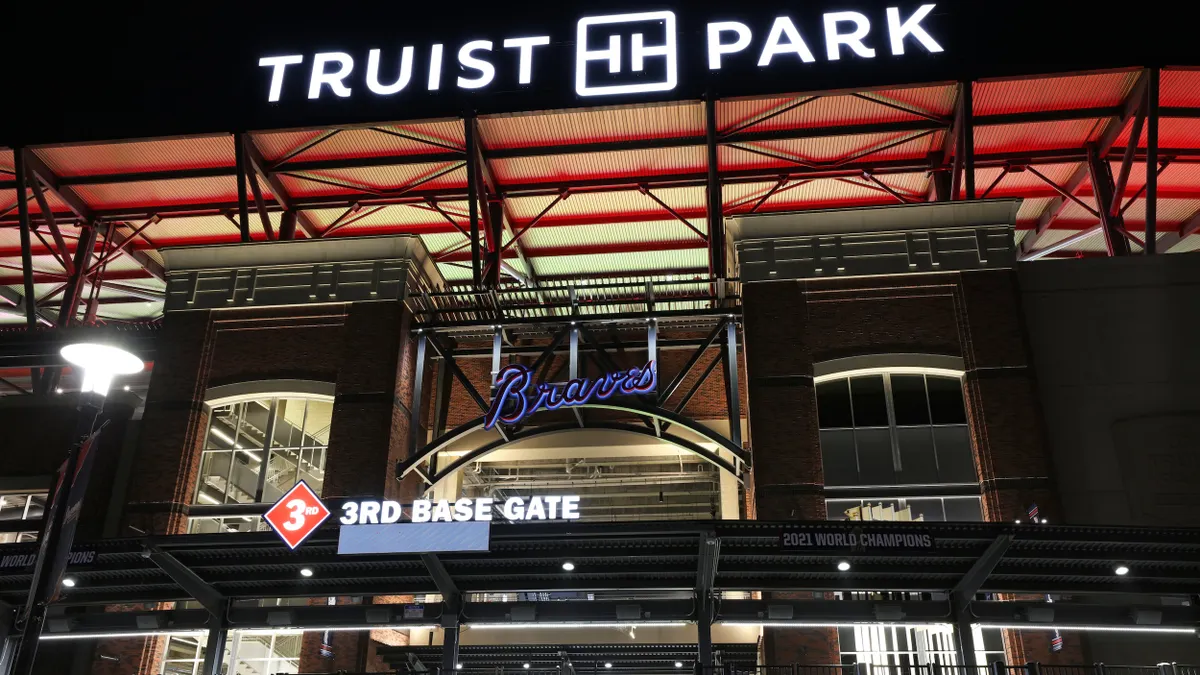With New York City considering new regulations on ride-hailing services like Uber and Lyft, some experts and the companies themselves have questioned city leaders' wisdom ahead of a possible vote in two weeks.
The proposed package of legislation would add a new license for high-volume for-hire vehicles from companies that have at least 10,000 trips per day. Companies would have to apply for a two-year license in this new category from New York’s Taxi and Limousine Commission (TLC) and submit a business plan to demonstrate the need for service in the areas where it plans to operate.
The second part of the package would temporarily end the issuing of new for-hire vehicle licenses, except for wheelchair-accessible vehicles, while the city spends a year studying the industry. New York City Council Speaker Corey Johnson said on a conference call with reporters Friday that the plan represents "the broad outlines of what the council thinks is the best path forward."
"We aren’t taking away any service that is currently being offered to New Yorkers," Johnson said. "We are pausing the issuance of new licenses in an industry that has been allowed to proliferate without any appropriate check. If any of these companies, if Uber wants to put a new wheelchair-accessible vehicle on the road, they can do that. We encourage them to do that."
Our goal is fairness, helping drivers, and reducing congestion. A pause gives us time to study the industry and see what works. We will continue to allow licenses for wheelchair accessible vehicles to encourage their growth. Something needed to be done & the Council took action!
— NYC Council Speaker Corey Johnson (@NYCSpeakerCoJo) July 27, 2018
According to a transcript released by the mayor’s office of an interview with Mayor Bill de Blasio on public radio station WNYC, he is in favor of the current plan because it could help reduce congestion on city streets — the number of licensed for-hire vehicles has grown to more than 130,000 — and give drivers more of a chance to make a living wage. New York City also recently heard a proposal from the TLC calling for a minimum wage for drivers that work for ride-hailing companies.
"So, there’s specifics to look at for sure but what I can say — and I hear this from New Yorkers all the time — is people want a lot more to be done about congestion and this is one of the things I think could start to address congestion," de Blasio told WNYC. "There’s tremendous concern for the drivers and the fact that a lot of these Uber drivers end up essentially working for subminimum wage is not acceptable and certainly a lot of concern for the yellow cab drivers and creating more fairness for them."
But this is not the first time that New York City has tangled with the likes of Uber and Lyft. In 2015, the city tried a similar capping tactic led in part by de Blasio, which failed due to immense opposition. This time around, a chorus of opposition is again raising their voices — not only among ride-hailing companies but also among some transportation experts, who say that capping the number of Ubers and Lyfts on the streets will not curb congestion. Instead, they say it may impact funding available to fix the city’s subway and lead to unequal service across New York’s many neighborhoods.
Equity of service
In separate statements, both Uber and Lyft said that the cap on licensed vehicles would affect service in areas of New York City that are not well served by the ubiquitous yellow taxis, or by the Metropolitan Transit Authority’s (MTA) subway and bus system.
Some taxi drivers have a reputation of refusing to take fares to areas like Brooklyn or neighborhoods even further out due to fears about safety, or a belief that it will make them less money than if they stay in denser regions like Manhattan. That has helped contribute to some areas feeling left behind compared to others, and both ride-hailing companies said their service has helped fill in any gaps. Removing their services, they said, would cause great harm.
"This would take New York back to an era of standing on the corner and hoping to get a ride," a Lyft spokeswoman wrote in an email to Smart Cities Dive. "Wait times would increase significantly and driver earnings and job opportunities would shrink. Worst of all, the proposals prioritize corporate medallion owners above the overwhelming majority of New Yorkers."
"The Council’s cap will hurt riders outside Manhattan who have come to rely on Uber because their communities have long been ignored by yellow taxis and do not have reliable access to public transit,” Uber spokesman Josh Gold told the The New York Times.
New York Urban League President and CEO Arva Rice wrote in an opinion piece for Crain’s New York that such a cap would bring back "the bad old days."
“It's public knowledge that when yellow cabs ruled the street, people of color — especially those in the boroughs — had a hard time hailing," Rice wrote. "But when Uber and Lyft came online, with firm anti-discrimination policies designed to combat racial redlining and better customer service than the Taxi and Limousine Commission, areas of the city like my neighborhood in Harlem finally had more options, equity and access."
According to data provided to Smart Cities Dive by Lyft, ride-hailing services have been effective in helping level the playing field. Lyft officials said nearly 80% of their rides in the city start outside Manhattan, its central business district, while 35% of rides start or end in low-income areas.
In studying publicly-available TLC data, a recent report by nonprofit advocacy group the Tri-State Transportation Campaign found that ride-hailing does the "vast majority of the yeoman's work" in serving low-income communities, according to Executive Director Nick Sifuentes.
Efforts to curb congestion, raise driver pay
New York City is notorious for its congested streets, especially in and around Manhattan, and ride-hailing has been blamed in part for adding to that congestion in cities across the U.S. In a recent report by Schaller Consultants, shared rides were found to add 2.8 new vehicle miles for every one personal vehicle mile removed, resulting in a 180% increase in driving on city streets.
Johnson said that congestion is now "plaguing the city," while City Councilmember Steve Levin said on the same conference call that the market is now "pretty well saturated, if not over-saturated" — meaning, there are too many for-hire vehicles on the streets and drivers are not able to make a living wage due to the competition.
Sifuentes said it is in everyone’s interests to try and reduce traffic congestion, especially in those most congested areas. As such, he said, there may be merit in trying to limit ride-hailing by geographic area to prevent situations where Uber or Lyft drivers cruise around Manhattan looking for customers and cause more traffic.
"The challenge therein of course is the challenge of deadheading, as you don't want to create a situation where people are picking up in Queens, dropping off in Manhattan, limited from picking up somebody else in Manhattan and having to drive an empty car back out of the city," Sifuentes said.
"We aren’t taking away any service that is currently being offered to New Yorkers. We are pausing the issuance of new licenses in an industry that has been allowed to proliferate without any appropriate check. If any of these companies, if Uber wants to put a new wheelchair-accessible vehicle on the road, they can do that. We encourage them to do that."

Corey Johnson
Speaker, New York City Council
Both Johnson and Levin said the higher competition brought by more ride-hailing on the streets means that drivers are unable to make a living wage, meaning they work very long hours to make ends meet. In the most extreme scenarios, some even commit suicide as they are unable to support themselves and their families.
The New York Taxi Workers Alliance (NYTWA) said in a statement that the cap on ride-hailing vehicles is an "important step to stop the crisis of poverty."
"Uber has been allowed to operate unfettered for over five years and the result is a crushing race to the bottom and economic despair among a workforce of over 100,000 drivers,” NYTWA Executive Director Bhairavi Desai said in a statement. "The proposed cap is a necessary pause button after six drivers have committed suicide as a result of that despair, and as broader issues of congestion and loss in MTA revenue and ridership caused by Uber, Lyft and cohorts grip the city."
Lyft, however, disputes that driver pay is low. The company told Smart Cities Dive it sent a letter to the TLC in June outlining median driver earnings in New York City in 2018, and found the gross pay is $24.14 an hour.
Renewed calls for more congestion pricing
The proposed cap on ride-hailing has brought to the forefront a plan that has been through many iterations over the years: congestion pricing, especially for the city’s busiest boroughs. Congestion pricing, which would charge motorists to drive in certain areas during peak times, has recently gained ground as cash-strapped cities look for ways to raise revenue and encourage new behavior.
In New York, congestion pricing has gained support from Gov. Andrew Cuomo, although a proposal to charge cars $11.52 one way when driving through the busiest parts of Manhattan failed to make it into a recent state budget. Since then, the likes of the New York Daily News Editorial Board and experts on a panel discussion hosted in Brooklyn by startup accelerator URBAN-X have said it warrants more thought.
Sifuentes said congestion pricing on all vehicles must be considered as an attempt to get people to think differently about how they get around, especially in the most congested areas of the city.
"When you do congestion pricing, you're not banning anybody from traveling, you're not telling someone they cannot do this," he said. "What you're telling them is, 'Sure, you can do it but you're going to pay a lot of money.' I like the idea of adjusting human behavior through incentives and disincentives rather than just flat-out saying, 'I'm sorry, you can't do this anymore.'"
"This would take New York back to an era of standing on the corner and hoping to get a ride. Wait times would increase significantly and driver earnings and job opportunities would shrink. Worst of all, the proposals prioritize corporate medallion owners above the overwhelming majority of New Yorkers."

Lyft spokeswoman
Congestion pricing may yet have its moment in the sun in New York, thanks in part to the primary election campaign waged against Cuomo by Cynthia Nixon for the Democratic nomination for Governor. Nixon unveiled a congestion pricing plan of her own along with further taxes on millionaires and emissions, while Cuomo has called for a stand-alone congestion pricing plan.
Sifuentes noted congestion pricing has already been used to good effect in cities like London, which have had similar struggles with pollution and traffic to New York. "It's been around for a long time, it's been talked about, it's been studied, it's been tested, other places are doing it and we know that it generally works," he said.
New subway funding in jeopardy?
Some have questioned whether a cap on ride-hailing vehicles might impact the city’s ability to raise money for subway repairs, something the New York State Legislature dealt with earlier this year after calls from city officials.
Under the state’s recently-passed budget, lawmakers imposed a congestion surcharge of $2.75 on Uber and Lyft and $2.50 on taxis when used below 96th Street in Manhattan. Those surcharges are expected to raise around $400 million a year, which will be helpful for new MTA chief Andy Byford’s ambitious plan to speed up a whole host of subway fixes into a 15-year period in a plan dubbed "Fast Forward."
"We have a cap being imposed and we don't exactly know what that's going to look like, we don't exactly know what the freeze is going to lead to," Sifuentes said. "But I'm a little concerned that we just finally won hundreds of millions of dollars in investment for the subway and that could be in jeopardy now."
Byford’s plan is an acceleration of goals laid out in last summer’s $800 million emergency plan, which had a 50-year time frame for repair goals, with de Blasio and Cuomo reportedly at odds over who will pay for it. The new surcharge on Uber and Lyft could help, although there are worries that a cap would make it harder to raise the money needed if drivers leave the system and are not replaced by new ones.
A recent report found that ridership on trains and buses is down, with the MTA laying a large part of the blame at the door of ride-hailing but apparently without analyzing the impact of the poor reliability that continues to dog the transit system.
For its part, Uber said in a recent statement to POLITICO that it supported congestion pricing to "fix the subways and ease congestion in Manhattan and everyone — whether using a delivery truck, personal vehicle, taxi or Uber — should pay their fair share to help keep the city moving," according to Regional General Manager Sarfraz Maredia.
Despite the uncertainty, Sifuentes said he hopes "cool heads prevail" and the "good ideas stick," as New York is too essential to the state and region’s economy to be allowed to become a gridlocked mess with no end in sight.
"New York is too important to let fail and I think we're getting to the point where despite the squabbling between the Mayor and Governor, despite the mayor not living up to every promise he's made on transit, I think we're going to get to a place where we have to solve it because we can't afford to let NYC grind to a halt," he said.
Johnson said he expects the legislation to pass on August 8. "I feel like we’re in a good spot. I think people recognize that we have to do something here," he said.





















